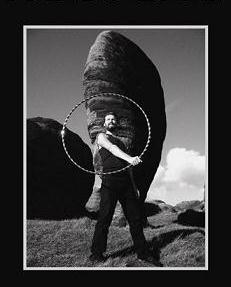 Handmade Hoops by Peachysteve
Handmade Hoops by Peachysteve
Isolation Roll
Taken from Chapter 3 of
"Hooping"
An Instructional DVD by Peachysteve
Isolations are a type of move in which the manipulated object remains in one place while the manipulator moves around the object.
Isolations are a difficult skill to master and can have a profound effect on the observer when seen.
They are also used in martial arts and can have a similarly profound effect on an opponent.
Isolations are most commonly seen in Contact Juggling where balls seem to float and hover in the air.
The film Labyrinth has David Bowie contact juggling.
The person who's hands we see is Micheal Moschen, the father of modern contact juggling.
He also worked with hoops and was the first person I ever saw isolating them. (Well worth seeking out footage of his routines).
Since his time many people have been captivated by the effect of isolations and much work has been done with different objects.
A few years ago I collaborated with some outstanding people to produce the In isolation DVD for which I designed the teaching section.
Learning to do isolations is twofold, learning the technique of the move and then how to create the effect.
Here is a gif to give you the idea of an isolation but it's much better to see on video
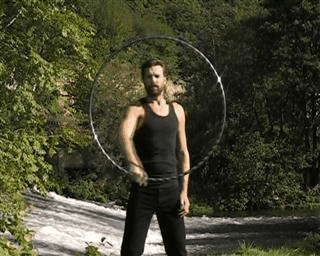
I'm showing an isolation with two different sized hoops so that you can see how my arm changes to accomodate the circles.
| I suggest when starting to hold the hoop at the bottom with palm facing down. This is the bottom of your circle and will define its position. |  |  |
| Notice how my arm is drawing a circle which is the same size as the hoop. As I'm using different sized hoops you can see the difference in my arm's extension. |  |  |
| There are different ways to judge if the hoop is circling in its own space. In the first image I look through the hoop keeping a view central inside the hoop. In the second I spot the top of the hoop keeping it fixed to a distant point in my view. | 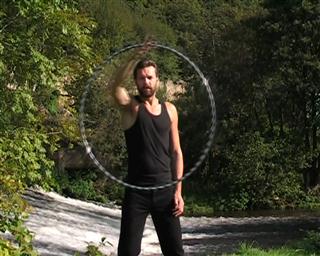 |  |
| Between 3 and 9 0'clock the hoop is gripped. From 9-3 o'clock there is a hand roll which I'll show in more detail. This is the bottom of your circle and will define it's position. |  |  |
| You keep a grip on the hoop up for as long as it's comfortable. By the time you reach 9 o'clock it's usually time to move into the hand roll. Release the hoop and roll your hand under it, while still drawing out the circle. | 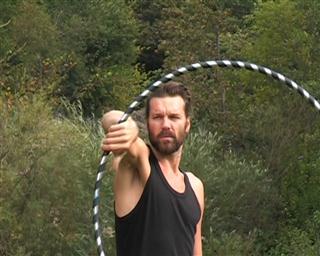 | 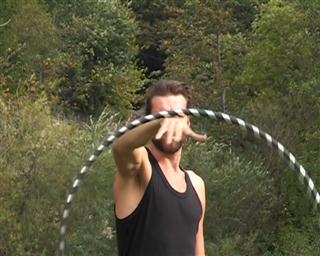 |
| The back of your hand turns up into the hoop and then away from it again. It follows the same track as in the hand roll but this time the hoop stays where it is. Your hand does the rolling underneath the hoop. Then you are in postion to grip the hoop and carry on drawing out the circle. | 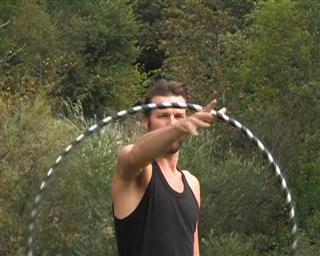 |  |
It's very difficult at first to keep the circle or even tell if the circle is still.
One great way to work on this is to ask a friend to hold up a hoop.
Hold your hoop up in front and then use their's as a guide, make sure your hoop doesn't stray from the other hoops circle.
After a little practice your arm will build the motor memory it needs.
| Click Here to return to the trick menu | Click the image to go to the DVD page |
Click Here to see a move which uses the isolation roll Step Throughs |








